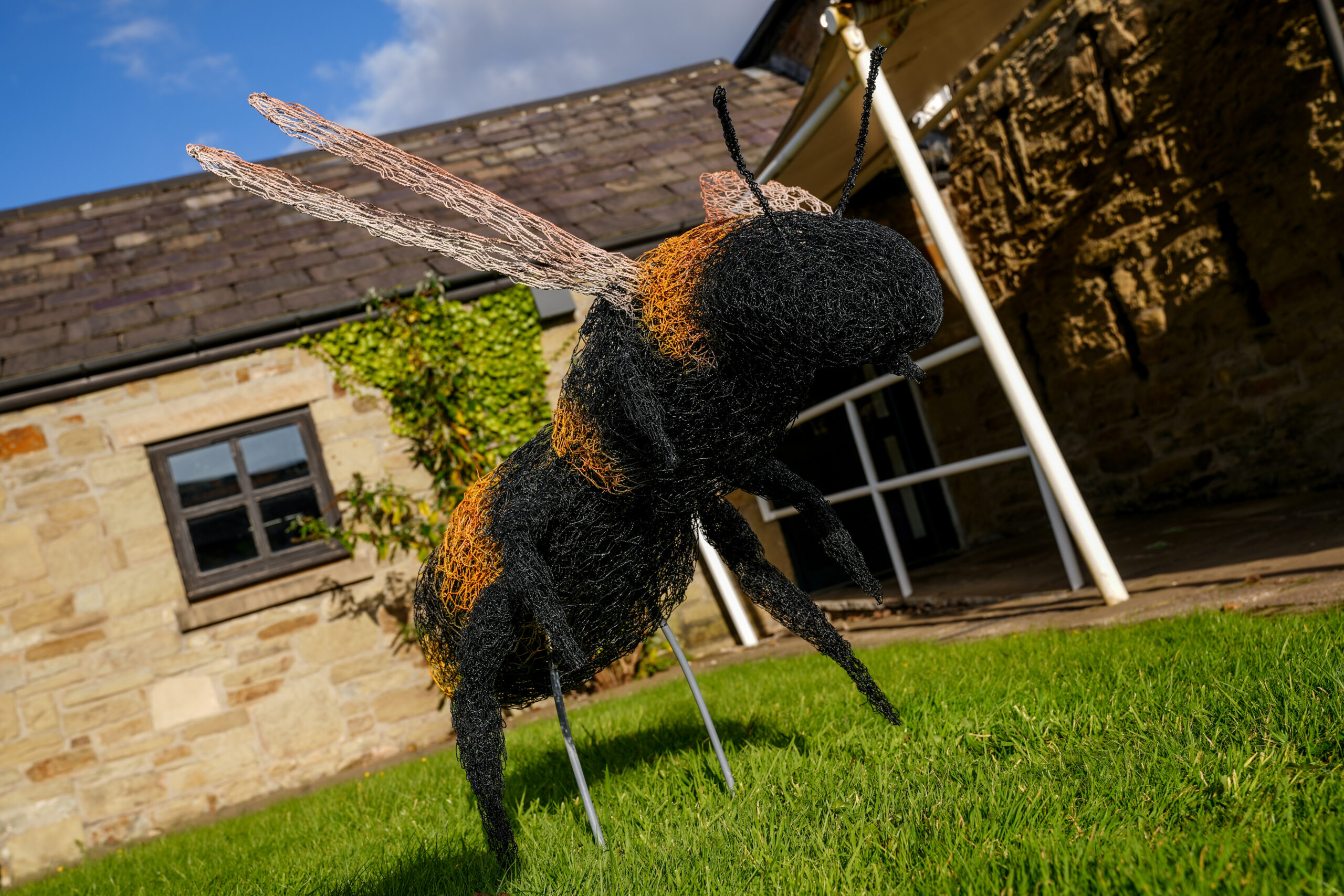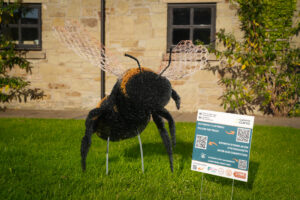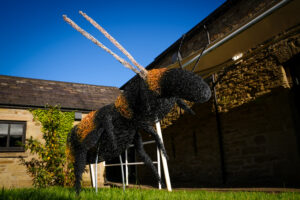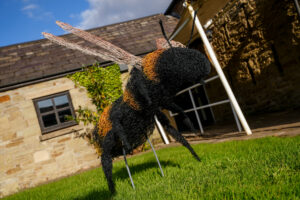Danger Point
BEES AND FLOWERS: A WILD RELATIONSHIP
Situated near Talacre Beach in Flintshire, DangerPoint is an educational centre dedicated to teaching essential safety skills to children and their families in a fun and engaging way. With plans to introduce a wildflower meadow, staff at the centre have chosen to place a bee sculpture amongst the blooms to symbolise the critical role these pollinators play in our ecosystem.

About us
The meadow will be filled with native wildflowers, which will not only enhance the centre’s surroundings, but will also serve as a hands-on learning tool to teach visitors about environmental issues and the importance of biodiversity and sustainable practices, providing a living example of how even small changes in land use can positively impact the environment.
In recent years, the UK has experienced a dramatic decline in wildflower meadows, with almost 97% lost since the 1930s due to changes in land use, intensive farming, pesticide use, and urban expansion. This loss has had a serious impact on bee populations, placing many species at risk. Conservation efforts to restore these meadows and create pollinator-friendly habitats are essential, not only for the bees, but also for other wildlife dependent on them.
By educating visitors about the relationship between wildflowers and their pollinators, DangerPoint is helping to forge a deeper understanding of our natural ecosystems, enhancing our appreciation for their intricate balance, and empowering us to take meaningful action in preserving and protecting them for future generations.
Brilliant Honey Bee Facts
Dancing for Directions: Honey bees communicate through the “waggle dance,” a figure-of-eight movement that conveys the direction and distance of food sources
Busy Foragers: A honey bee can visit between 50 to 100 flowers during a single foraging trip
Female Workers: Worker honey bees are all female and carry out most hive tasks, including foraging, cleaning, and nurturing the young
Prolific Queens: A queen bee can lay up to 2,000 eggs per day during peak seasons
Vital Pollinators: Honey bees pollinate around 70 of the 100 crop species that feed 90% of the world’s population
Bee Bread: Pollen is used to make bee bread, the bees’ main source of dietary protein. The pollen also provides bees with fats, vitamins and minerals
Honey Makers: Honey bees are the only insects that produce food consumed by humans: honey!
Timeless Treasure: Honey never spoils! It has been found in ancient tombs and, incredibly, is still edible thousands of years later
Colony Size: A colony of honey bees typically contains around 20,000 to 80,000 bees
Super Antennae: Bees use their antennae to detect smells, and even measure humidity levels in the hive
Fast Flyers: Honey bees fly at speeds of about 15 miles per hour
Bee Vision: Bee-lieve it or not, honey bees have 5 eyes: two large compound eyes, and 3 simple eyes, called ocelli. This complex eye system allows them to navigate and perceive colours, shapes, and UV markings on flowers
Creating a Buzz: A honey bee’s wings beat an impressive 200 times per second, creating the familiar buzzing sound
Long-distance Travellers: Worker bees can travel up to five miles from their hive in search of food
Hard-Won Honey: The average worker bee produces only one twelfth of a teaspoon of honey in her lifetime
Keen Sense of Smell: Honey bees have an extraordinary sense of smell, and can distinguish between hundreds of different floral scents
Master Architects: Honey bees build perfectly hexagonal honeycomb cells to maximize space and efficiency
Bee Democracy: Honey bee swarms use a democratic decision-making process to choose a new hive location
Royal Jelly: Queen bees are fed a special substance called royal jelly, which determines their development into queens
Temperature Control: Honey bees can regulate the temperature of their hive, keeping it at around 93°F (34°C) to protect the brood
Seasonal Lifespans: Worker bees live for around six weeks to six months in the summer and can survive for several months during the winter
Honey as Medicine: Honey has natural antibacterial and antifungal properties, and has been used in traditional medicine for centuries
Loyal to the Queen: Worker bees are devoted to protecting and feeding the queen, ensuring the colony’s survival
Sting and Die: Worker honey bees can only sting once, as their stinger gets lodged in the skin, causing their death shortly after
Bees Can Recognise Faces: Honey bees can recognise human faces by piecing together patterns, similar to how humans recognize each other!

Contact Information




